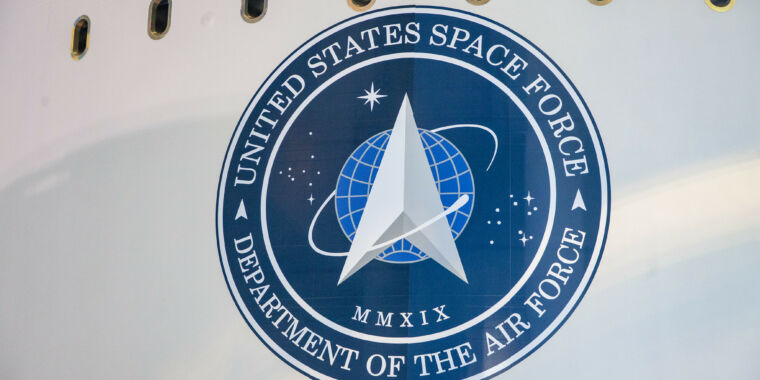
-
United Launch Alliance will attempt to launch its Atlas V rocket Thursday.United Launch Alliance
-
It will be the first mission for the US Space Force, with the logo shown here.United Launch Alliance
-
In February, the process of moving the Atlas V booster onto the Mobile Launch platform began.United Launch Alliance
-
The Atlas V booster is hoisted onto the mobile launch platform at the Vertical Integration Facility adjacent to Space Launch Complex-41.United Launch Alliance
-
This variant of the Atlas V has a five-meter-wide composite payload fairing, and five solid rocket boosters shown here.United Launch Alliance
-
Here the satellite is encapsulated in the payload fairing.United Launch Alliance
-
The Advanced Extremely High Frequency-6 (AEHF-6) communications system is mounted on top of the Atlas V rocket.
-
And voila, here's a rocket ready to launch.United Launch Alliance
-
And on its way to the pad.United Launch Alliance
United Launch Alliance says its Atlas V rocket is ready to launch on Thursday from Cape Canaveral Air Force Station in Florida. Liftoff is set for 2:57pm (18:57 UTC) for the national security mission, which has a two-hour launch window. This is the first launch under the command of the newly constituted US Space Force.
For this mission, the Atlas V rocket will boost the sixth and final satellite in a constellation of military communications satellites in geostationary orbit. The "Advanced Extremely High Frequency" (AEHF) satellites are replacing the older Milstar communications system. The individual satellites cost $850 million each, and this AEHF-6 satellite to be launched Thursday was built by Lockheed Martin Space Systems. The previous five AEHF satellites launched on Atlas V rockets from 2010 to 2019.
While United Launch Alliance has scaled back some aspects of its outreach for this mission due to the spread of Covid-19—for example, a social media event has already been canceled—the company is following protocols outlined in its internal Pandemic Plan and pressing ahead with essential activities.
Some spaceports around the world have closed down in recent days due to the spread of the virus. Europe has suspended activity at its primary spaceport in French Guiana, and Rocket Lab announced Wednesday that its next mission, scheduled for March 30, will not launch on time in light of New Zealand's heightened response to the pandemic.
"We commend the government for taking this drastic but necessary step to limit the spread of COVID-19," the company said on its website. "In the days, weeks, and months to come, we’ll be following the advice of the government and health authorities to protect our teams in the United States and New Zealand."
But at the US military's main spaceports in Florida, where the Atlas V rocket is due to launch, and Vandenberg Air Force Base in California, essential launch opportunities appear to be continuing, at least for now.
United Launch Alliance will provide a live webcast of the launch, beginning about 20 minutes before the opening of the launch window.
Listing image by United Launch Alliance
https://news.google.com/__i/rss/rd/articles/CBMibmh0dHBzOi8vYXJzdGVjaG5pY2EuY29tL3NjaWVuY2UvMjAyMC8wMy90aGUtZmlyc3QtbGF1bmNoLWZvci10aGUtdXMtc3BhY2UtZm9yY2UtaXMtc2V0LWZvci10b2RheS1mcm9tLWZsb3JpZGEv0gF0aHR0cHM6Ly9hcnN0ZWNobmljYS5jb20vc2NpZW5jZS8yMDIwLzAzL3RoZS1maXJzdC1sYXVuY2gtZm9yLXRoZS11cy1zcGFjZS1mb3JjZS1pcy1zZXQtZm9yLXRvZGF5LWZyb20tZmxvcmlkYS8_YW1wPTE?oc=5
2020-03-26 12:38:00Z
52780688449892
Bagikan Berita Ini














0 Response to "For the first time, the US Space Force will actually go to space today - Ars Technica"
Post a Comment